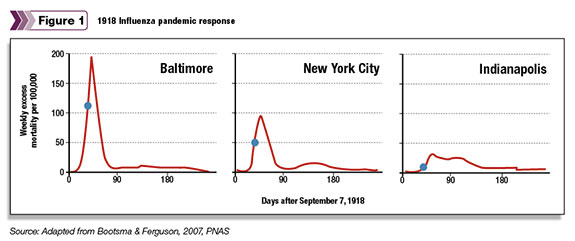When your veterinarian asks how your herd is doing, how do you respond? Do you provide a snapshot of how things are that day? Do you share anecdotal stories about calf health and reproductive loss? Do you state morbidity and mortality rates of your herd?
The only way to accurately answer this question is to implement a disease surveillance program, which captures every event associated with treatment and death as well as categorizes each event with as much detail as possible to identify trends and establish interventions.
Biosurveillance defined
The best way to collect data is through biosurveillance, the process of gathering, interpreting and communicating essential information related to disease activity and threats to animal health.By using the three steps of biosurveillance, we establish logical interventions in gathering data.
1. Step one of biosurveillance is active data gathering, which can be as simple as entering information into a ledger or as complex as utilizing comprehensive dairy management computer software programs.
2. Step two is analysis and interpretation. This is the easiest but often missed step because of the urgency of other priorities. It is so easy to focus on fixing problems that appear urgent while missing a trend that may lead to tremendous death losses if not addressed.
3. The final step is to use the information to make changes in your herd and communicate those changes to your team. Having an early warning and detection system in place can avoid huge losses in the herd.

A historical example
Let’s look at an example of the effects of a strong biosurveillance program.Figure 1 provides historical data from the great flu pandemic of 1918. Along the X axis are days following Sept. 7, 1918.
Historically, Sept. 7 is when the flu was believed to have gained a foothold in the U.S. The Y axis shows weekly excess mortality per 100,000 people in the population.
The dot on the graph represents the point that officials in each city recognized a problem, interpreted the collected data and implemented steps to minimize death losses.
The results demonstrate that Indianapolis was the most proactive in managing the flu outbreak – and therefore prevented the greatest losses.
In applying the 1918 flu data to current dairy and calf health disease surveillance, which city best represents your dairy operation? To help answer this question, consider the following:
• Do we have a biosurveillance program in place that is updated daily?
• Is the surveillance program monitored and interpreted?
• Once a trend is identified, is a team of people in place to offer courses of actions to minimize negative impacts?
If you have said yes to these questions, you are on the right track.
As a good example, a dairy manager who closely monitors morbidity and mortality health trends noticed an uptick in calf sickness and loss.
The dairy assembled the team to capture data and conduct a system analysis. It only took three days to confirm the milk pasteurizer had malfunctioned and correct the problem.
An enhanced biosurveillance plan
In addition to putting a biosurveillance plan in place, there are three new technologies to consider for enhancing your plan:• Electronic daily milk weight capture and analysis – Capturing daily milk weights and loading that data into a software package is the most powerful technological biosurveillance breakthrough in recent years.
The dairy industry is inundated with vaccine or reproductive claims of a variety of products.
Beyond the expected efficiency, what is the effect of implementing the intervention on milk production? How easy would it be to do on-farm evaluations using daily milk weights to determine if an intervention was necessary or costly?
• Routine ultrasound examination of calf lungs – This biosurveillance technique enables a veterinarian to assess prior health interventions and predict future productivity. If the lung has identifiable lesions, there is growing evidence that the calf will not be productive and may never grow to be a lactating cow.
This technique also could be applied to evaluate youngstock health programs. In many cases, a product recommendation may be made on anecdotal evidence and not backed by strong science.
Looking at hard data in a live calf using ultrasound is a new technology that can be used on farm to support or refute non-data-driven recommendations.
• Deep nasal pharyngeal swabs – This is a new diagnostic tool for respiratory disease detection. To determine the cause of illness, a swab is inserted through the nostril and sent to a diagnostic laboratory for culture and sensitivity.
This non-invasive technique, done under the advice and direction of your veterinarian, can take the guesswork out of treatment.
Best management practices
There is great value in implementing a disease surveillance program in your dairy herd. The old management adage, “You can’t manage what you can’t measure,” is more true today than ever before, particularly as dairies and calf ranches grow in size and as the standards of animal care increase for all farms.In developing or fine-tuning your disease surveillance program, remember these important best management practices:
• Work with your veterinarian to develop a disease surveillance program best suited to your dairy or calf ranch.
• Build or improve your current health records system. Areas to monitor include morbidity and mortality rates by disease; incidence of respiratory disease, mastitis, reproductive efficiency and milk production; vaccination and treatment records, etc.
• Consider new technologies of disease surveillance, such as milk production monitoring and diagnostic testing.
• Capture and analyze the data at regular intervals, so trends can be identified and corrected if necessary.
• Intervene with the cooperation of your herd health team to keep your herd healthy and productive.
A sustained and accurate biosurveillance program is important for all dairy farms and calf ranches. Just like the 1918 influenza pandemic, you’ll be able to respond more quickly, be more confident in your management decisions and, ultimately, raise a healthier, more productive herd.





